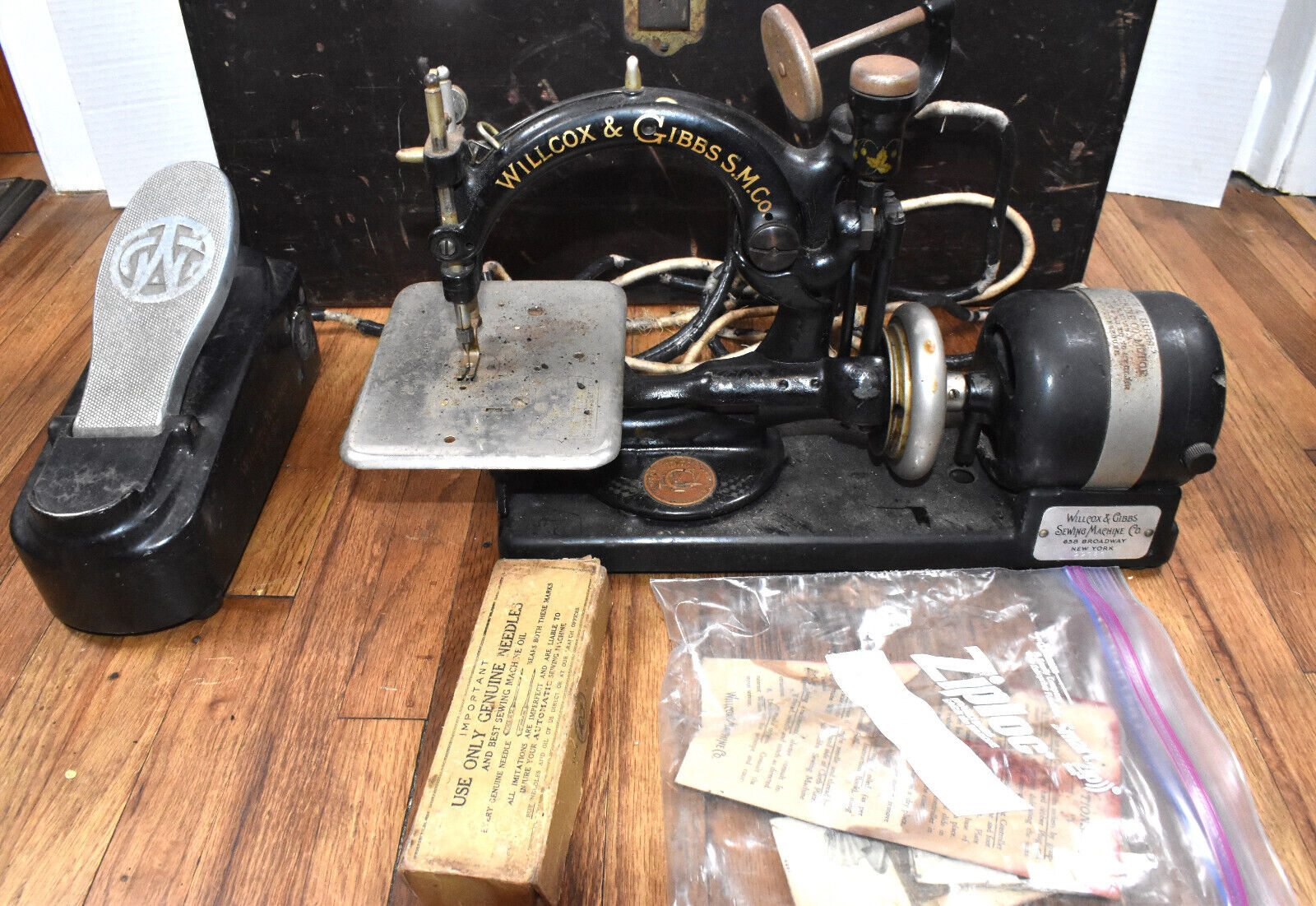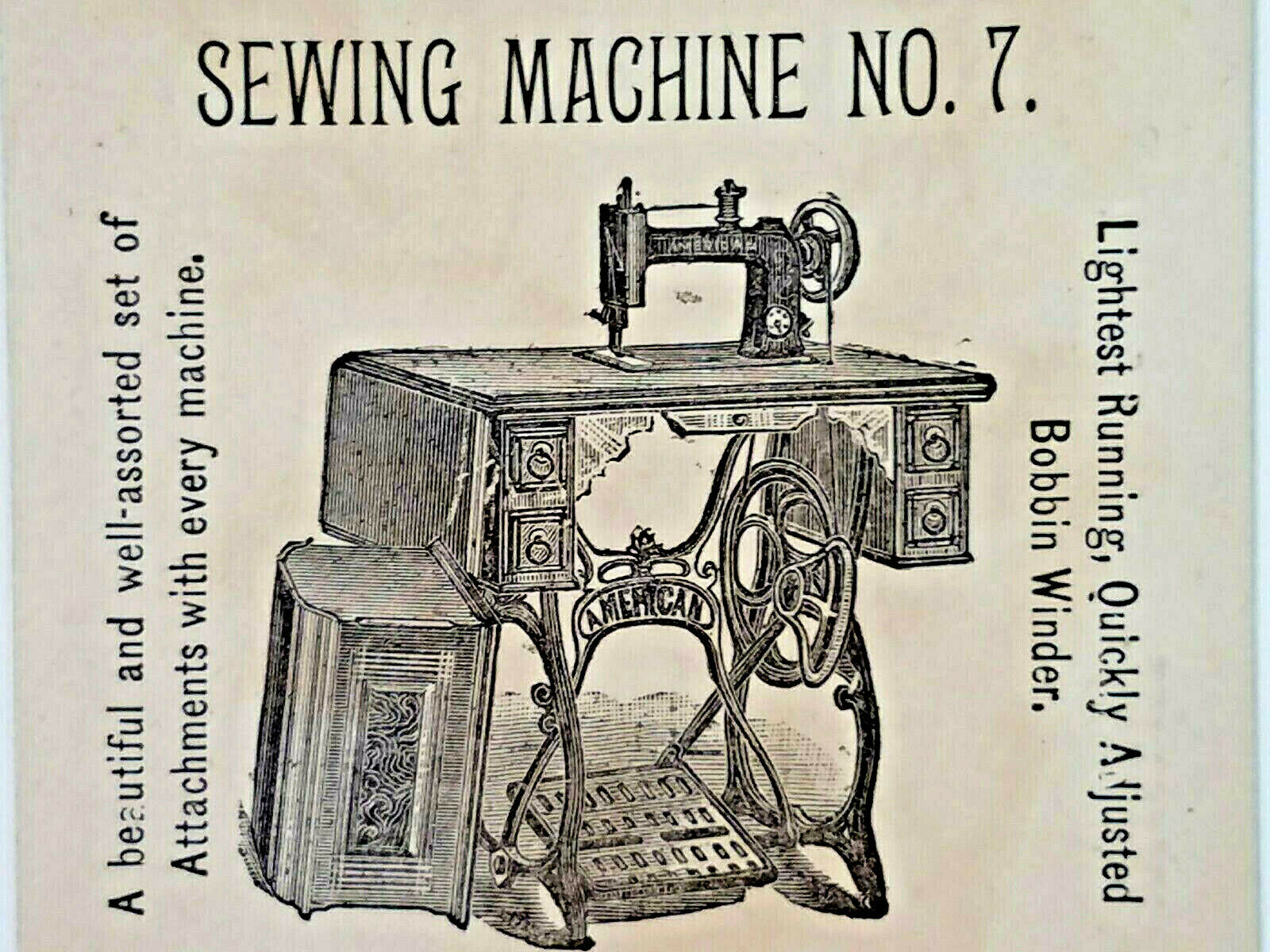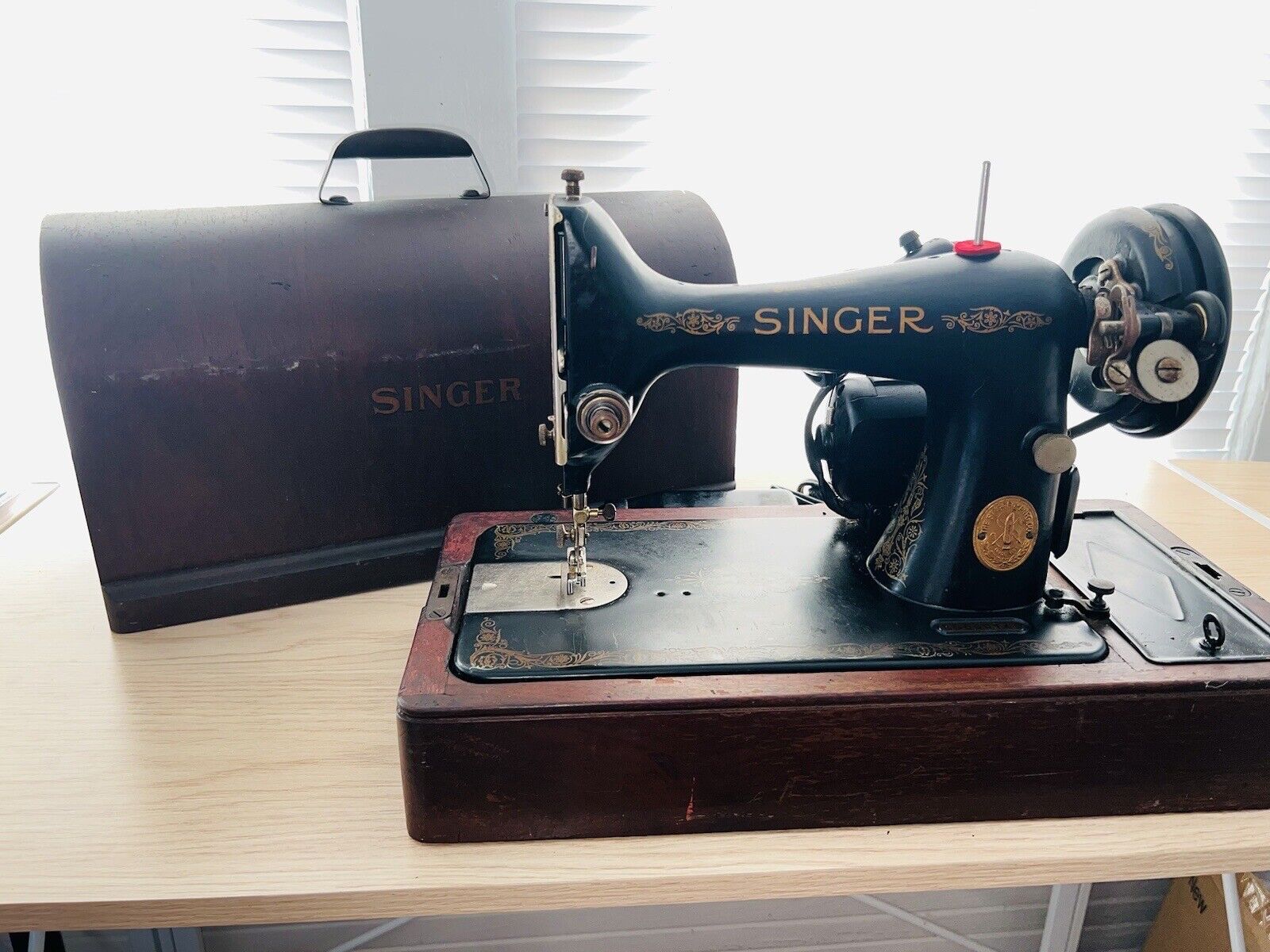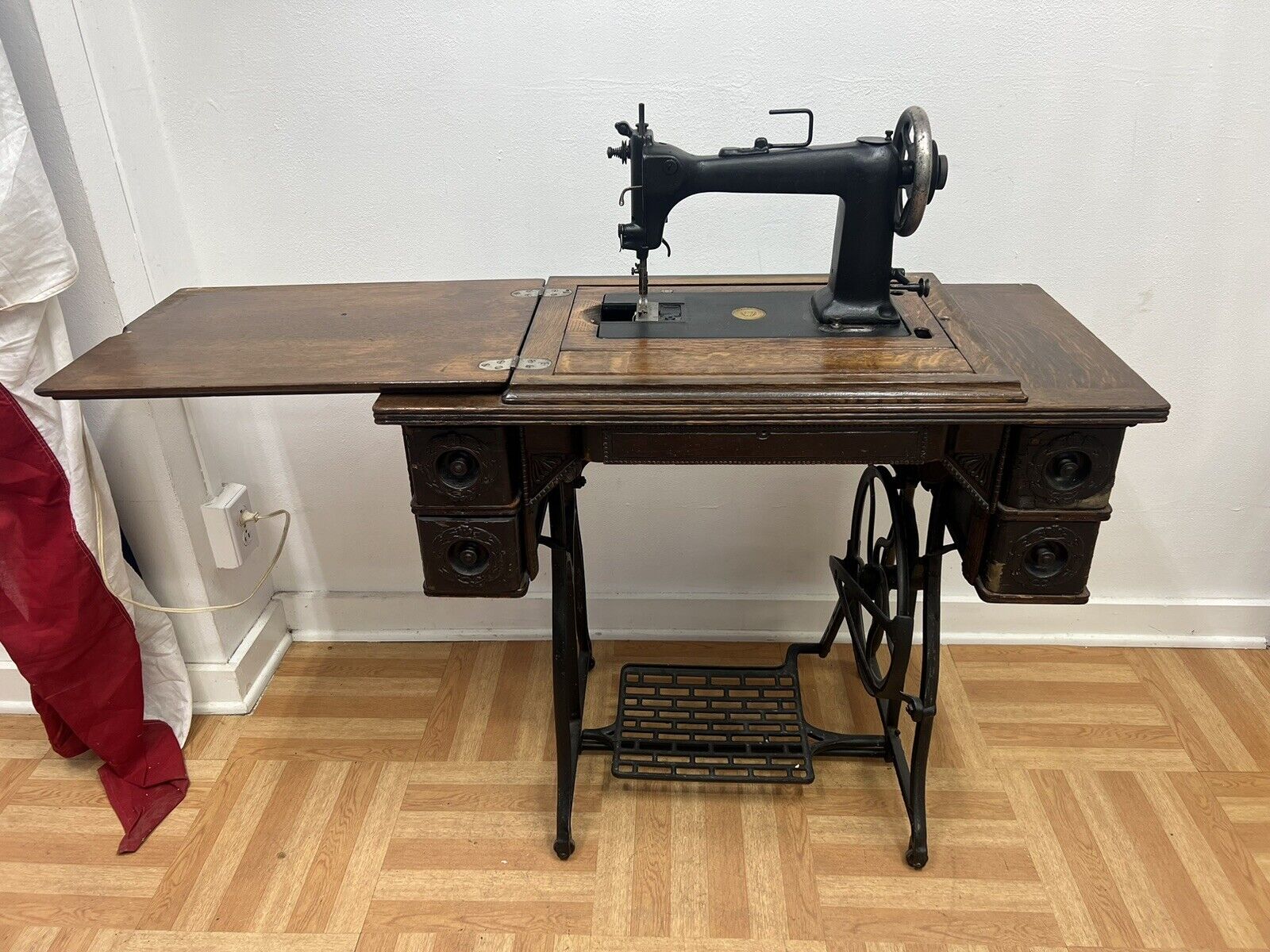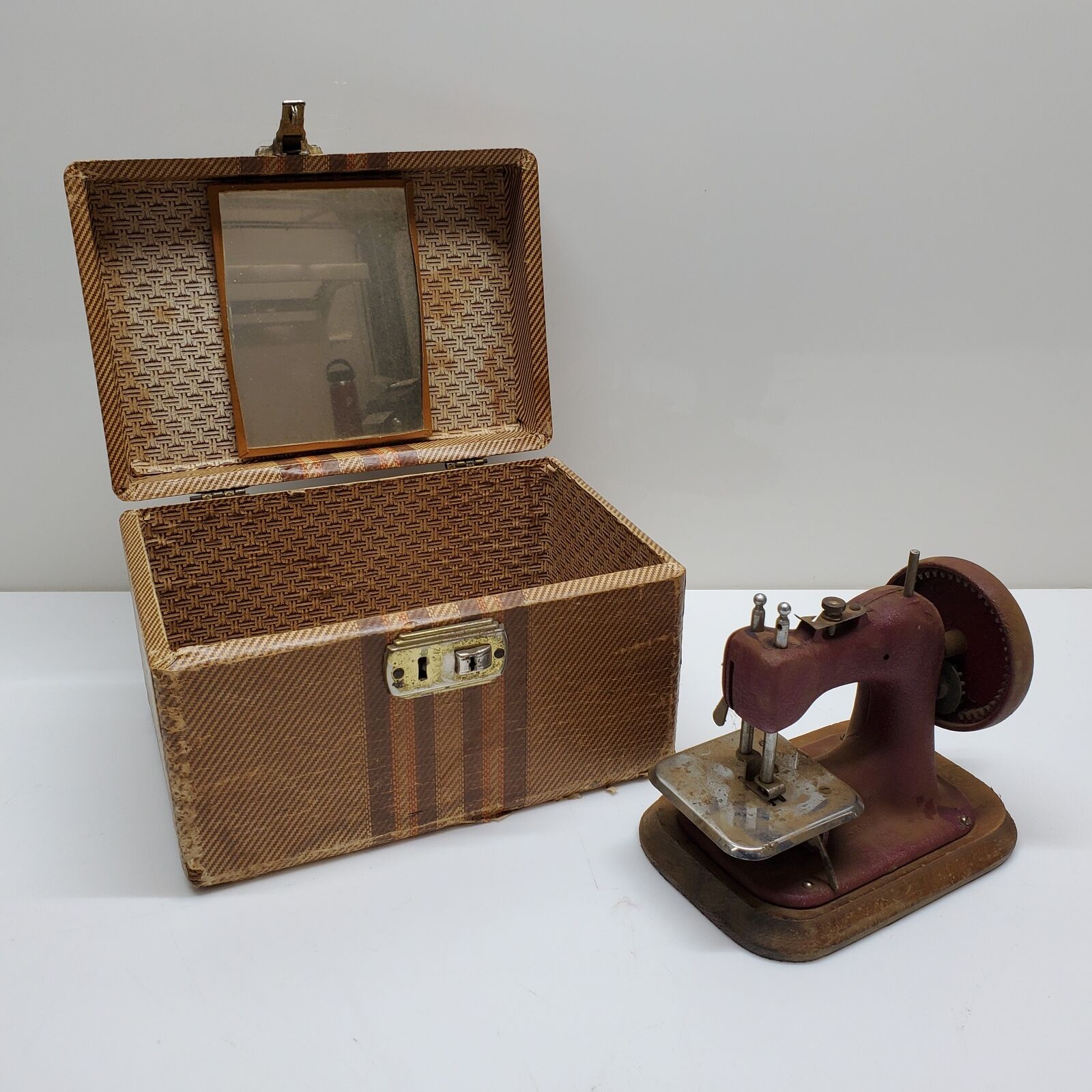-40%
1900 OTTOMAN CARNATION DECORATED ANTIQUE SINGER 48K SEWING MACHINE WORK COMPLETE
$ 194.83
- Description
- Size Guide
Description
LEGENDARY"OTTOMAN CARNATION"
DECALS DECORATED,
ORIGINAL
"
SINGER" MODEL "48 K"
SEWING MACHINE,
COMPLETE WITH NICE COVER AND BASE.
FULLY WORKING CONDITION, ALL PARTS MOVE GOOD.
APPROXIMATELY FROM YEAR 1900 OR LATER.
COMPLETE WITH ORIGINAL, 48K,
TWO BOBBINS AND BOBBIN CASE (PICTURE 8).
HAVE SERIAL NUMBER - J850449 (PICTURE 9).
VERY LOVELY ORIGINAL FLOWERS DECORATED.
REAL PIECE OF SEWING MACHINES HISTORY.
SERIOUS AND VERY HEAVY CONSTRUCTION.
IN FULLY, ALL COMPONENTS, WORKING CONDITION (TESTED),
BUT IT IS ANTIQUE ITEM AND I CAN NOT GIVE ANY WARRANTY
ABOUT FULL TECHNICAL STATE.
YOU STRAIGHTLY WILL BUY THE ITEM,
WHAT YOU SEE IN THOSE PICTURES.
I HAVE SOME OTHERS INTERESTING ANTIQUE,
ART NOUVEAU, MILITARY, SCIENCE AND
ENGINEERING EQUIPMENT.
PLEASE SEE MY PROPOSALS.
WILL BE SEND WITH VERY STRONG,
SAFE, BOX PACKAGING
.
I WILL BE GLAD ANSWER ALL YOUR QUESTIONS.
HISTORY:
Thinking about it, it is not very surprising that Singer produced their
distinctive interpretation of these designs when they did.
For example, the Victorian compendium of decorative styles "The Grammar of Ornament" produced by Owen Jones, categorized different styles collected from around the world and was widely used as inspiration by designers in every aspect of Victorian life; ceramics, glass, metalwork, furniture, carpets, textiles, wallpapers and interior designs.
The prolific designer and innovator Christopher Dresser, who was far ahead of his time, contributed to The Grammar of Ornament. He was greatly interested in plant designs, as was the Arts & Crafts movement led by William Morris. William de Morgan, the most famous Arts & Crafts tile maker, used colour and designs inspired by Ottoman pottery, while William Morris and others used Ottoman patterns on many items such as fabrics, wallpapers and tiles.
These decals were introduced on the Singer Model VS1 around 1884.
The Singer 48K, which was manufactured exclusively with Ottoman Carnation decals, came into production in 1900 (much later than many similar German transverse shuttle models were being marketed).
Ottoman Carnation decals were therefore being produced around the time of Queen Victoria's Golden Jubilee in 1887, throughout the 1890s and Victoria's Diamond Jubilee in 1897 until c1911.
There was a great deal of popular interest in Levantine and Indian design at this time. Huge parades were held in London with potentates and emissaries from all Britain's colonies taking part. Victoria had taken the title Empress of India in 1876 and was fascinated with Levantine and Indian design, so these styles were very fashionable.













